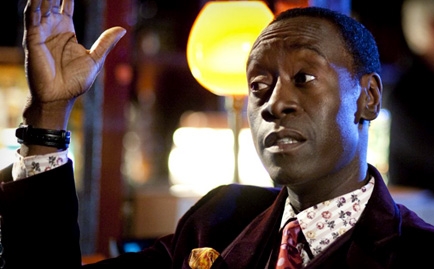About six months ago, Andrew started building hand-made wooden pipes out of his tiny garage in Orange, Calif. He had just turned 23, gotten married and rented a small duplex on the south side of town. After googling the process extensively, he bought some used equipment and set up shop.
Now Andrew sells his one-of-a-kind pipes online through his Etsy store and to any locals who find out about this artisan in their own backyard for upwards of $150 per pipe.
But there’s one other fascinating fact about Andrew: He wants to plant churches. Not your typical megachurch where metrosexual keyboard players do songs inspired by the holy Scriptures of St. Bono & The Edge, but organic, hyper-local expressions of community that multiply off each other. It’s creative. It’s his dream, his passion, his life calling.
But it doesn’t fit the mold.
Andrew jumped through all the hoops necessary for a successful career in traditional ministry. He went to a Christian college, got his master’s in theology at Fuller Seminary, and began interning at a megachurch. But the kind of churches Andrew wants to build are geared toward a generation that’s grappling with the shift in our economy, that still lives with their parents and boasts entrepreneurial ideas without the capital to back them up. To rely on this demographic to support him financially would be risky, stressful and some would even say, foolish.
It was during this realization that Andrew came up with a practical solution to the complexities of his pipe dream—learn how to make pipes.
It’s funny. We’re a society gravitating closer and closer toward a local, homegrown lifestyle, frantically clinging to nostalgia and simplicity while simultaneously existing in a global environment that’s bent on exponentially increasing the breadth of our ability to connect on an expansive level through technology and social media.
We’re caught between the old and the new, the local and the unexplored, the way it’s always been and the way it could be.
We stand directly in the tension of wanting to add to the chaos of new ideas exploding onto the scene with fresh genius and somehow sustain ourselves in the process. We’re idea junkies addicted to concepts that are bigger than our parents, bosses and professors can fathom; ideas that don’t fit the current model, or better yet, don’t even have a model yet, but are just … cool. (Thanks, Mark Zuckerberg.) We boast them on Facebook, Twitter and, if we’re really brave, LinkedIn profiles. Most of them are ingeniously artistic, slightly ambiguous, leverage the power of social media and at their core seek to benefit our communities both here and abroad.
All this is happening in the foreground of an increasingly bleak, disintegrating landscape. Gas prices continue to rise. The job market continues to crumble. Businesses operating under traditional models are evaporating. Words like “recession” and “deficit” have become a normal part of life. We’re convinced we have the answers and hold the keys to the future, but are we too arrogant? Too impatient?
If history is a pendulum swing, then what lies just beyond the current chaos?
In an increasingly digital world, it’s elemental that our entrepreneurial generation focuses just as much on the physical. While asking ourselves, “What hasn’t happened yet that could?” we need to also question: “What will always remain? What’s tangible? What isn’t going away anytime soon?”
We need to make pipes to support pipe dreams.
The rise of an increasingly hyper-local society, an increasing demand for all things organic, the demise of the current economy mix with the emergence of powerful e-commerce tools to provide the perfect concoction for a future that values the local artisan. It resembles 18th century colonial society but with more advanced trading tools, a society where individuals shift from being transient and egocentric to members of tightly knit communities exchanging goods with each other without driving too far for them or gambling their trust.
It’s the artisans who will successfully navigate through their creative goals without breaking the balance of their bank account, who can create something of tangible value in a world scraping to monetize digital space, who can craft something with the ability to possess both a history and a future, something unique worth preserving.
It could be making pipes. It could be crafting jewelry. It could be taking photographs and offering a client canvas prints in addition to handing them a thumb-drive of jpegs.
Ask, “What’s ordinary that can be made uniquely?”
The ability to create local goods has the ability to sustain our new ideas, our fickle schedules and our entrepreneurial spirit. It will give us the ability to focus on the long road ahead while giving us an outlet for our creativity in the meantime. Because big needs small. Far needs near. Community needs creativity. And that’s not going away anytime soon.
CJ Casciotta is a brand architect, writer, artist and creative pioneer with a passion for raising a new generation of innovative leaders and forward thinkers. He is the president of CREATE CULTURE, a brand consulting agency, and the founder of SOUNDS LIKE A MOVEMENT, a non-profit that helps people engage their local communities. CJ has consulted organizations like Whole Foods, The Salvation Army, INO Records & ROCKHARBOR, and has been featured on MTV, VH1 and JCTV.





















